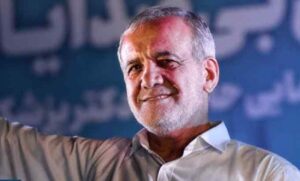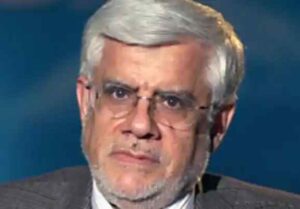Here’s a detailed look at the presidents of Iran from the inception of the Islamic Republic in 1979 to the present, arranged in a tabular format, with notable achievements and downsides of their tenures.
READ ALSO: Presidents That Have Ruled Philippines Till Date
| President | Years in Office |
|---|---|
| Abolhassan Banisadr | 1980–1981 |
| Mohammad Ali Rajai | 1981 |
| Ali Khamenei | 1981–1989 |
| Hashemi Rafsanjani | 1989–1997 |
| Mohammad Khatami | 1997–2005 |
| Mahmoud Ahmadinejad | 2005–2013 |
| Hassan Rouhani | 2013–2021 |
| Ebrahim Raisi | 2021–present |
First President of Iran: Abolhassan Banisadr

Achievements:
- Establishing the Republic: Banisadr was the first president after the 1979 Revolution and helped set up the new Islamic Republic.
- Economic Reforms: He worked on stabilizing the economy, focusing on controlling inflation and managing services.
Downsides:
- Political Strife: His time in office was marked by political instability and conflicts with other leaders.
- Clashes with Clergy: Banisadr had disagreements with Ayatollah Khomeini, which eventually led to his removal.
Current President of Iran: Masoud Pezeshkian

Masoud Pezeshkian became the current president of Iran on July 28, 2024, following the death of Ebrahim Raisi. Pezeshkian, a reformist, has been viewed as a potential bridge between the hardline factions and the reformist movements in Iran.
Achievements:
- Reformist Agenda: He aims to introduce reforms that address economic challenges and improve civil liberties.
- International Relations: Pezeshkian seeks to enhance Iran’s international standing and negotiate better terms regarding sanctions and diplomatic relations.
Downsides:
- Political Polarization: He faces significant challenges in a highly polarized political environment, where hardliners dominate the political landscape.
- Immediate Challenges: As a new president, he must quickly address pressing economic issues and public dissatisfaction.
READ ALSO: Presidents That Have Ruled China Till Date
Current Vice President of Iran: Mohammad Reza Aref

Mohammad Reza Aref is currently serving as the First Vice President of Iran, having been appointed on July 28, 2024, by President Masoud Pezeshkian.
Aref, a prominent reformist politician, previously held the same position from 2001 to 2005 under President Mohammad Khatami. His recent appointment marks a return to a significant role in the Iranian government after nearly two decades.
Key Tenures in Iranian Presidential History
Ali Khamenei (1981–1989):
- Achievements: Khamenei helped stabilize the country after the revolution and end the Iran-Iraq War.
- Challenges: His term included the hardships of continuing the war with Iraq.
Hashemi Rafsanjani (1989–1997):
- Achievements: Rafsanjani focused on economic development and modernization, improving relations with the West.
- Challenges: His presidency faced criticism for corruption and increasing economic inequality.
Mohammad Khatami (1997–2005):
- Achievements: Khatami promoted reforms and better relations with the West, and worked on enhancing civil liberties.
- Challenges: His reforms were often blocked by conservative elements in the government.
READ ALSO: Presidents That Have Ruled Vietnam Till Date
Mahmoud Ahmadinejad (2005–2013):
- Achievements: Ahmadinejad focused on populist policies and advanced Iran’s nuclear program, which he saw as a symbol of resistance.
- Challenges: His presidency led to international isolation due to controversial statements and policies.
Hassan Rouhani (2013–2021):
- Achievements: Rouhani negotiated the Joint Comprehensive Plan of Action (JCPOA) to limit Iran’s nuclear activities in exchange for sanction relief.
- Challenges: Despite the JCPOA, his term faced setbacks with the re-imposition of U.S. sanctions and economic difficulties.
